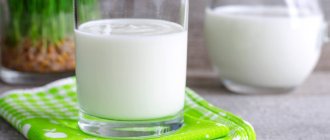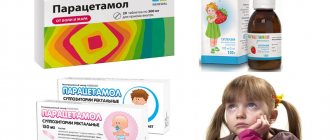From birth, the baby’s parents try to give him only the best: clothes, toys, food. Young mothers pay special attention to the nutrition of their children, because healthy food is the key to the future health of the child.
The baby receives the most important nutrients, of course, from breast milk. But as soon as the child turns 6 months old, it is already necessary to introduce food of animal and plant origin. This process is not quick, since the child needs time to get used to new products.
While food is more or less clear, many questions arise with drinking. Mothers, as a rule, begin to carefully study what their child can drink and what not. After 6 months, the baby should be given plain water in small quantities, compotes, and special children's teas. This raises questions about fermented milk products. This article will focus on kefir.
Kefir is famous for its unique beneficial properties, and it would seem that there should be no controversy about its use. But everything useful can be harmful in large quantities. And if this concerns the health of the child, then this issue must be taken seriously.
Is it possible to use kefir in complementary feeding for infants and is it harmful? We will talk about this in our article.
ARTICLES ON THE TOPIC
Other types of products described on the website: Cottage cheese, Meat puree, Fish.
When can you start giving?
Few people know that kefir is translated from the Caucasian language as “kef” for health. And Caucasians, in turn, are famous for their good health and longevity. This fermented milk drink is really useful for both adults and children.
Here is a small list of its beneficial properties:
- Restores intestinal microflora;
- Helps strengthen your immune system;
- Protein in kefir is absorbed better than in milk;
- Increases appetite;
- Contains beneficial vitamins and is rich in calcium.
Kefir is a fermented milk product that is obtained by fermenting milk. For kefir, skim milk is most often used. A drink like kefir is beneficial due to its lactic acid bacteria. Most often, it is recommended to introduce it into the first complementary foods earlier than milk.
The fact is that such a drink is most easily absorbed by infants. You can also sweeten kefir with fresh berries and fruits. For children under one year of age, kefir should be introduced gradually. So, if the baby is on artificial feeding, then kefir can be introduced from 7 months, and if breastfed, then from 8 months.
You can administer one teaspoon per day, slightly increasing the dose each time. By the age of one year, the child can already be given about 200 ml of kefir per day. But do not forget that kefir contains calcium, so if the crown is overgrown at a rapid pace, then it is better to postpone the introduction after a year.
There are quite a few opinions from pediatricians and nutritionists about whether it is even possible to give kefir to a child under one year of age. For example, Dr. Komarovsky recommends driving from 8 months.
On the contrary, nutritionist Kira Sukhilova asks to refrain from using it for up to a year, as she believes that the child’s stomach is not strong enough to process lactose, which can cause an allergy to this product.
If you adhere to the opinion of pediatrician Komarovsky, then by 9–10 months the baby can be given 100 ml of fermented milk drink per day, and by one year it can already be 200 ml per day. It is not worth increasing the dose, since the kidneys in children will not be able to cope with such an amount. Portions can be increased from the age of three.
About children's and adult kefir
As has already been emphasized, it is forbidden to give “adult” kefir to infants. For complementary feeding you will have to use a special baby product. Usually, the packaging with such kefir indicates the approximate age at which a child can be introduced to complementary foods. It’s not hard to guess that mostly parents will see the inscription “8+”.
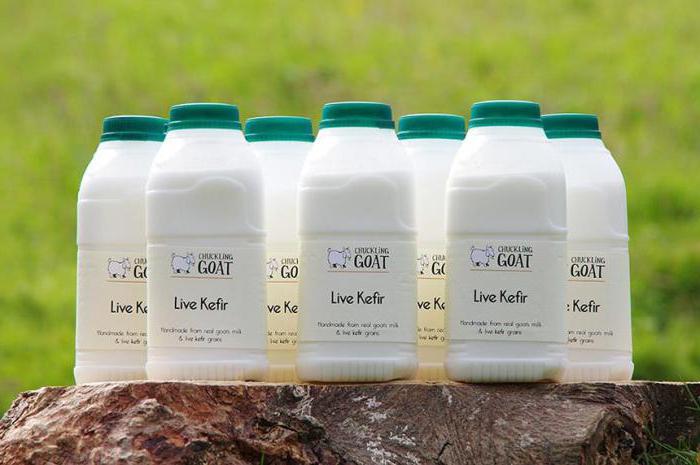
Children's kefir (from 6 months or from 8 months) fully meets the requirements of the baby's gastrointestinal tract. Such products have low acidity. In addition, kefir for infants is not so sour. It has a delicate taste. All this helps in good absorption of the product.
How to introduce it into complementary foods?
- Kefir should be given in the first half of the day;
- First you need to offer one teaspoon of kefir. If the drink does not cause any allergic reactions and the child likes the taste, then by the age of one year the dose can be increased to 150-200 ml per day;
- Do not let children drink kefir cold, warm it slightly;
- Buy kefir with a minimum percentage of fat content;
- Do not under any circumstances add sugar to kefir. To remove the sour taste, you can add sweet berries, fruit puree or baby cookies.
Basic rules for drinking fermented milk drink by a child
Kefir is an extremely healthy and nutritious product. But if you violate the rules for its use or storage, it can cause serious harm to the child’s health.
Attention
During an illness that is accompanied by an increase in body temperature, it is strictly forbidden to offer the child any fermented milk products and milk porridges. This is due to the fact that casein has the property of “coagulating” at elevated temperatures, and therefore is difficult to break down. Instead of fighting the disease, the body has to spend a lot of energy digesting practically “rubbery” food, which as a result provokes the accumulation of acetone.
Rules for storing and using baby kefir:
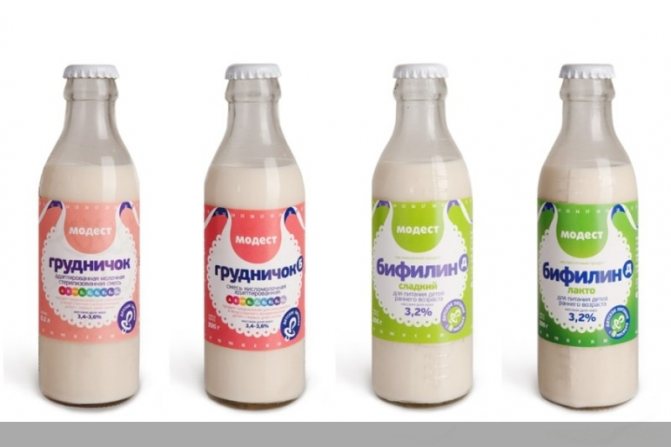
Kefir intended for a child must be fresh. If you are buying a ready-made product for a child, then you should choose freshly produced kefir with the shortest shelf life. The longer kefir can “live”, the more preservatives it contains.- The drink must be stored under the right conditions: at a temperature of zero to six degrees. Once the package is opened, kefir cannot be stored even in the refrigerator.
- Packaging integrity. There should be no damage, dents or other defects on the packaging of baby kefir.
- A child can only be offered kefir at room temperature, so before consuming it, it should be taken out of the refrigerator an hour or an hour and a half before meals. It is not recommended to use heating household appliances. If you need kefir in the near future, you can warm it up a little in a water bath.
- It is better to offer your child kefir separately from other foods.
- If the baby flatly refuses a fermented milk drink, then the parents have two options:
- postpone your introduction to kefir for some time;
- add fruits already familiar to the baby (in the form of puree) or baby cookies to the drink.
Important
It is worth knowing that fruit juices can neutralize lactobacilli, the presence of which affects the usefulness of kefir.
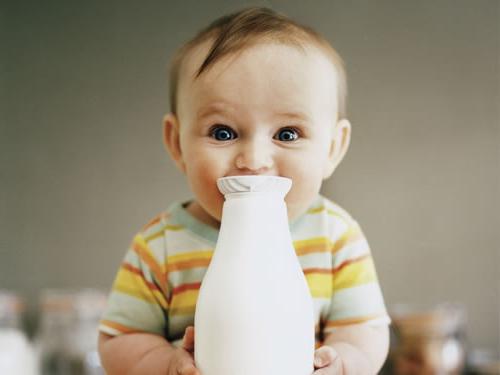
Many parents resort to sweetening kefir with sugar, which is strictly not recommended. Firstly, sugar itself will not bring anything beneficial to the child’s body other than health problems, and secondly, sweetened kefir causes severe gas formation in children, accompanied by pain.
Let us add that a reasonable approach of parents to kefir complementary feeding allows not only to painlessly diversify the child’s diet, but also to significantly improve the overall well-being and digestion of the baby. Before introducing a fermented milk product into the children's menu, be sure to consult your pediatrician.
Tokareva Larisa, pediatrician, medical columnist
15, total, today
( 176 votes, average: 4.56 out of 5)
How to create a favorable microclimate indoors
Hypoallergenic diet for nursing mothers
Related Posts
How much can you give?
The maximum portion of kefir consumption for a child from one to three years old is 200 ml per day. It should be introduced gradually from 7 months, starting with a teaspoon. Over the course of a week, the portion increases to 100 ml. Kefir should be drunk from a spoon or from a mug; it should not be given from a bottle. Cookies or a piece of fruit also go well with kefir. It should be consumed in the first half of the day, preferably as an afternoon snack.
If a child suffers from anemia, then it is better to start drinking kefir after a year. And if the baby doesn’t like the taste of a fermented milk drink, then there is no need to force him to drink, there are many alternative products.
How to choose?
Currently, the store has a huge selection of kefir from a variety of manufacturers. Because of such abundance, many parents are lost in choosing a product.
In fact, it is difficult to say which kefir from a particular manufacturer tastes better, because children, like adults, have different tastes.
Just choose a product that does not contain starch, preservatives or harmful dyes. The composition should contain two main products - milk and sourdough.
By the way, you can also find special children’s kefir in the store. It comes, as a rule, of three types: regular kefir, biokefir and bifikefir. Such kefirs are saturated with bifidobacteria, which are very beneficial for the stomach.
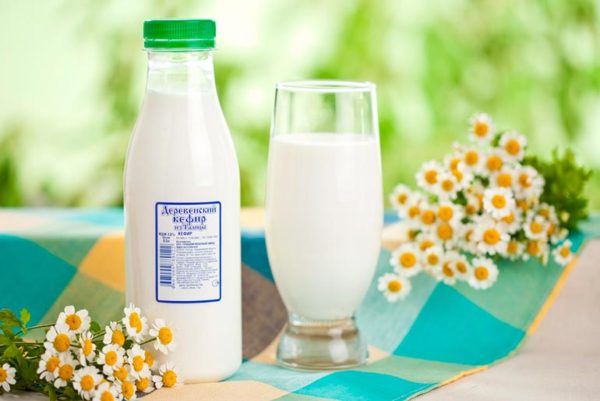
Basic principles of selection:
- Be sure to store kefir in the refrigerator; do not overheat the drink;
- The composition should not contain harmful substances: dyes or preservatives;
- The product must be fresh, always look at the date of manufacture;
- You should not pour kefir into another container. It is best to store it in the packaging in which you bought it;
- For children's kefir, the packaging indicates at what age it can be consumed.
How to cook at home?
Making kefir with your own hands is not as difficult as it seems. The main products are, of course, milk and sourdough. You can buy milk at any store, and buy the starter at the pharmacy.
For children, milk should be taken with a fat content of about 3.5%, posterized or melted. Boil the milk on the stove in a special container, cool to 40 degrees and pour into a jar. Next, you need to add the starter to this jar of milk and close the lid tightly.
Wrap the jar in a towel and put it in a warm place for a day. Then place the jar in the refrigerator for a couple of hours to cool. That's all, delicious and healthy kefir is ready! Bon appetit.
What is the difference between a child and an adult?
A baby’s body is not yet fully developed, unlike an adult’s, so it is more difficult for him to digest fatty foods. Children's kefir is always made with lower fat content and from premium products.
Also, some manufacturers add beneficial vitamins and minerals to children's kefir. In addition, all children's products undergo strict quality checks, and in stores they monitor their shelf life much more closely than other products.
Adult and children's kefir are very similar in composition. Their main differences are:
- As a rule, in addition to milk and starter culture, adult kefir also contains an alcohol product.
- The acidity level in children's kefir is much lower than in adults, because it is easiest for a child's body to digest such a product.
- oduct.
- For the production of children's kefir, only the highest grade milk is selected, while the first grade is allowed for the adult composition.
- Baby food products are always thoroughly tested, so the product will always be of your quality.
In this article you will find out whether it is possible to freeze pureed meat for a child,
But what should you do if your baby refuses to eat it?
Recommendations and rules
It doesn’t matter which brand you prefer, there are general rules, compliance with which is very important in order not to harm the health of the little one, namely:
- Storage conditions. The most suitable temperature for storing fermented milk products is from 0 to + 6°C. After opening the package, its contents should be consumed immediately. Repeated consumption of a drink from an open package (even when stored in the refrigerator) is unacceptable. Homemade fermented milk drink can be stored for no more than 72 hours.
- Temperature regime. Giving preheated kefir to your child is strictly not recommended.
- Place of the drink in the diet. There is no need to combine kefir with other products. It is best to have the drink as a snack between main meals.
- The connection between the drink and weight gain. Kefir is very useful for children who gain weight normally. If you are underweight, it is better to eat cottage cheese.
- Varieties of store-bought kefir. Since today on store shelves you can find not only regular and children’s kefirs, there are also bifi- and bio-kefirs. Such drinks contain an increased amount of bacteria, so they should be consumed with caution, and it is best to postpone the baby’s introduction to them until 3 years of age.
In conclusion, I would like to add that when introducing any new product into the diet of children under one year old, you need to know when to stop. Even if your baby eats this healthy fermented milk product with pleasure, this is very good, but do not overuse it. Even healthy foods can become harmful if you go too far!
